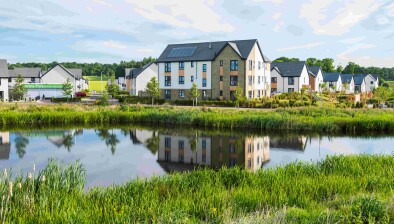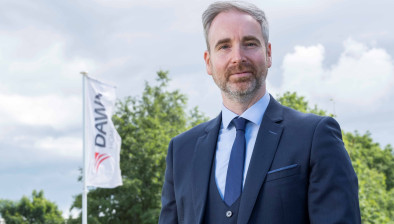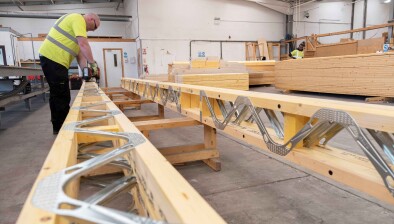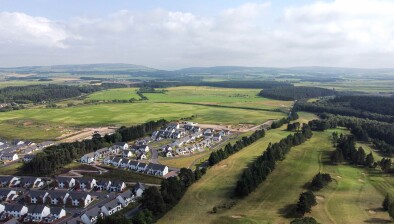Springfield Properties shifts focus to rental market in north of Scotland

Innes Smith
Springfield Properties has revealed it is in “advanced discussions” with power infrastructure providers in the north of Scotland, which could open up a new multi-year income stream from renting out homes to workers.
The key part of an evolving Northern-focused strategy was unveiled in the housebuilder’s results for the year to 31 May, which show substantial rises in profits and falls in bank debt, as expected, but with a higher-than-anticipated dividend.
Springfield Properties reported an increase in revenue to £280.6 million (2024: £266.5m) and a near-doubling of profit before tax and exceptional items to £20.1m (2024: £10.6m), underpinned by land sales and a sharper focus on long-term opportunities.
While total completions declined to 799 homes (2024: 878), Springfield’s profitability was bolstered by a landmark agreement to sell six undeveloped sites in Central Scotland to Barratt for £64.2m. This deal not only accelerated the group’s debt reduction but also freed up capacity to pursue opportunities in the north of Scotland, what Springfield now identifies as its most compelling growth driver.
Springfield’s revised strategy centres on the “unprecedented” opportunities unfolding in the north, driven by the UK’s urgent push for energy security and renewable infrastructure. With research by Highlands & Islands Enterprise pointing to £100 billion of investment over the next 25 years, the scale of associated job creation is expected to spark a surge in housing demand across the region.
Highland Council alone has set a target of delivering 24,000 homes in the next decade, with the authority poised to become the first in Scotland to leverage new Masterplan Consent Area powers to accelerate delivery.
Springfield’s extensive landholdings, over 4,000 plots across 50 sites in the North, position it to play a leading role in meeting this demand. The company has also submitted around 1,400 acres of land for allocation in the council’s forthcoming Local Plan, due by the end of 2026.
A central component of Springfield’s northern strategy lies in its ongoing discussions with infrastructure providers, which are now at an advanced stage. These companies, tasked with delivering renewable energy and grid projects, require thousands of high-quality homes for workers during construction phases.
Springfield is in talks to deliver housing that would be leased on multi-year agreements, expected to span around four years. This model would provide Springfield with steady rental income, while also ensuring a pipeline of homes available for sale or transfer to affordable housing partners once the lease periods conclude.
Chief executive Innes Smith described this dual-track model as a way to “maximise the value of our land bank” while meeting both immediate workforce needs and long-term community growth.
The sale of land to Barratt has already reduced Springfield’s bank debt to £20.9m (2024: £39.9m). The group has also secured new bank facilities with Barclays post year-end, including a three-year revolving credit facility of £77.5m (reducing to £47.5m after 12 months) and an overdraft facility of £2.5m, giving it further financial headroom to act on northern opportunities.
Despite subdued market conditions affecting completions in both private and affordable housing, Springfield has emerged from 2025 with momentum. Affordable housing margins improved significantly as legacy contracts wound down, while private housing reservation rates remained steady despite elongated sales cycles.
Innes Smith said: “I am pleased with what we achieved this year and how we have positioned ourselves for greater success going forward. We accelerated the reduction of our bank debt and delivered an increase in both profit and revenue, despite sales continuing to be impacted by subdued market conditions. We have made the decision to refocus our strategy to capitalise on the substantial opportunities in the north of Scotland driven by incoming energy security infrastructure and renewable development.
“We have already made excellent progress in implementing this new strategy and are now in advanced discussions with infrastructure providers whereby we expect to enter an agreement in the near term for the build and multi-year lease of housing. This would allow us to receive regular income over the course of the lease as well as having further options for monetisation at its conclusion.
“This reflects our ability to navigate the market and our agility to deliver innovative solutions to meet housing need while maximising the value of our land bank in this area of high demand. We are very excited about the prospects in the North of Scotland, in particular, and we continue to look to the future with great confidence.”
“We have made the decision to refocus our strategy to capitalise on the substantial opportunities in the north of Scotland driven by incoming energy security infrastructure and renewable development. We are very excited about the prospects in the North in particular, and we continue to look to the future with great confidence.”









